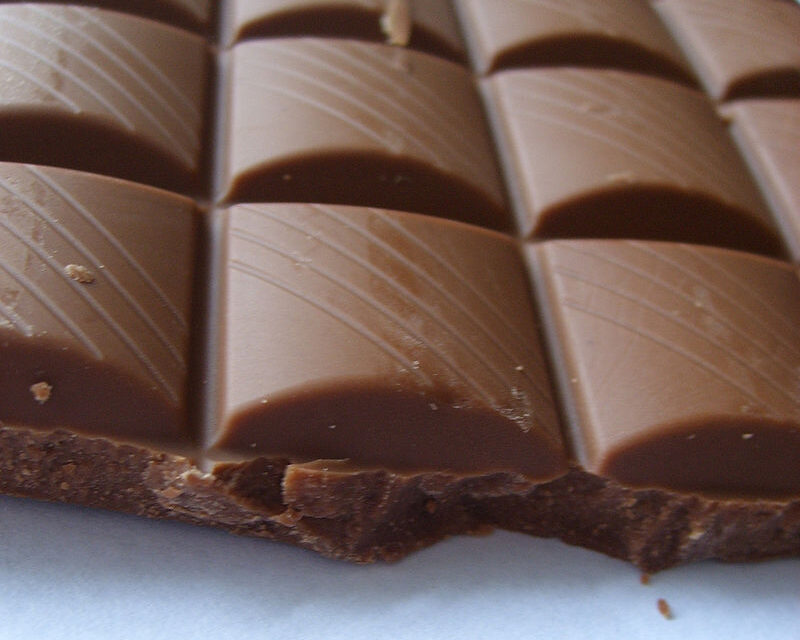Milk chocolate is a solid chocolate confectionery containing cocoa, sugar and milk. Chocolate was originally sold and consumed as a beverage in pre-Columbian times, and upon its introduction to Western Europe. Major milk chocolate producers include Ferrero, Hershey, Mondelez, Mars and Nestlé. Between them, they are responsible for over half of the chocolate sold worldwide. Although four-fifths of all milk chocolate is sold in the United States and Europe, increasingly large amounts are consumed in China and Latin America. While taste and texture have been key to its success, milk chocolate has also historically been promoted as a healthy food, particularly for children. Recent evidence has shown that it may provide antioxidant health benefits.
The word chocolate arrived in the English language about 1600, but initially described dark chocolate. The first use of the term “milk chocolate” was for a beverage brought to London from Jamaica in 1687, but it was not until the Swiss inventor Daniel Peter successfully combined cocoa and condensed milk in 1875 that the milk chocolate bar was invented. Switzerland quickly developed as the centre of milk chocolate production, particularly after the development of the conche by Rodolphe Lindt, and was increasingly exporting to an international market. Milk chocolate became mainstream at the beginning of the twentieth century following the launch of Cadbury Dairy Milk and the Hershey bar, while Belgium saw a blossoming of chocolatiers with ninety manufacturers in Brussels alone by the 1920s. At the same time, milk chocolate was combined with other ingredients, like nougat, to form a wide variety of bars, including Toblerone in 1908, Goo Goo Cluster in 1912 and Kit Kat in 1935. The global spread of milk chocolate continued into the next century, along with increasing consolidation in the market. A more recent development has been the rise of Fair Trade and UTZ Certified chocolate aiming to provide ethical assurances for customers. In 2018, the market for milk chocolate was worth $63.2 billion.
While all milk chocolate contains cocoa, milk and sugar, the proportion of these ingredients varies between countries and brands, which in turn affects its nutritional value. The driving force for these differences is taste. For example, Belgian chocolate is known for its mild milky flavour, while some Russian brands have a strong cocoa taste. The taste drives the ingredients, although these are also affected by other factors, particularly economics. For example, cost is the main reason for the introduction of cocoa butter replacements like coconut and palm oil. However, there are also regulatory reasons. In 1973, for example, the European Union decreed that chocolate must have a minimum of 35 percent dry cocoa solids. More recently, China has also introduced legislation to require locally produced milk chocolate to contain 25 percent cocoa butter.
The benefits claimed were broad. Cocoa butter, for example, as it coated the teeth, was claimed to reduce tooth decay. Chocolate was claimed to produce calming effects, reducing stress, and even producing a similar feeling to falling in love. Scientific evidence increasingly backed up claims for the health benefits of chocolate. For example, magnetic resonance imaging (MRI) scans have demonstrated that chocolate consumption can reduce the risk of heart disease. A typical milk chocolate bar also contains about 20 milligrams (0.31 gr) caffeine per 100 grams (3.5 oz), which can stimulate the nervous system and help the body balance its internal water balance. At the same time, the amount of caffeine is a concern to some healthy living advocates. Chocolate is also a source of polyphenols that have antioxidant properties, which may also have health benefits.
Information and Image from Wikipedia






Recent Comments